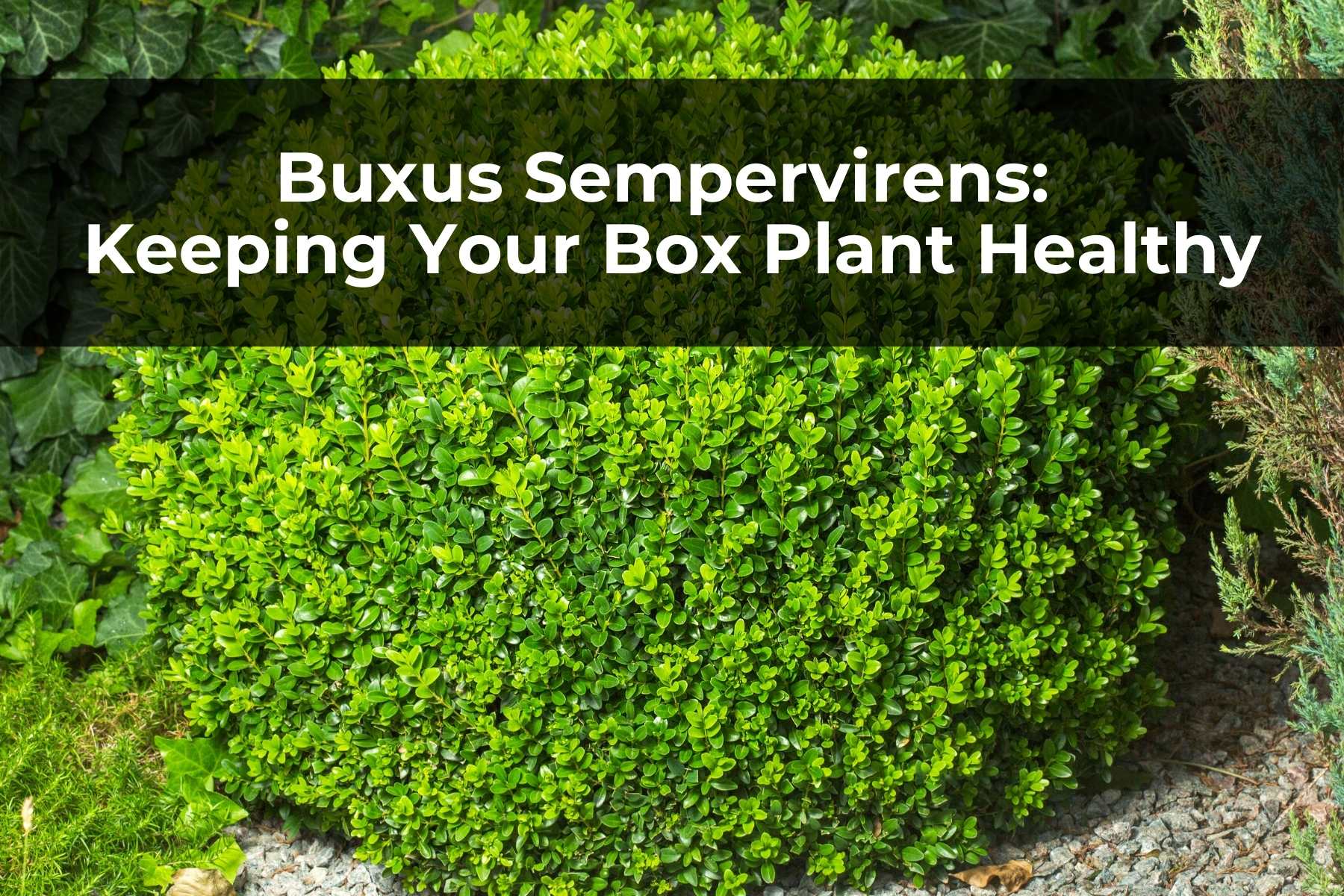Last Updated on June 12, 2023 by Real Men Sow
How do we keep our box plant healthy? Box or Buxus sempervirens plants are used in pots, trimmed into shapes, and as a hedge. It can be found on balconies, patios, window boxes, and even on doors. It can withstand shade, drought, urban pollution, and other difficult growing conditions.
Unfortunately, the box has been afflicted by both box blight and a plague of caterpillars that enjoy foliage in recent years. The box, like most evergreens, is often starved. While we feed our vegetables and fruit, evergreens such as boxwood, are often left hungry. They eventually starve after many years of growing in the same soil.
Has your Box Plant really got box blight?
In winter, Box (Buxus sempervirens) plants can take on an orange or bronze hue, especially if it is grown in full sun, particularly in pots. The plants can look very sickly because of this extreme discoloration. It is not called box blight. Potash deficiency is often the cause. Potash, the most soluble nutrient, is easy to wash from the soil. As a result, potash deficiency can cause plants in containers that are not watered to become starved. Winter is when the effect is most severe.
If the leaves are showing signs of discoloration, use a fertilizer in the spring. To make sure that the plants have access to potash and nitrogen immediately. You can also repeat this process after two weeks. The plants will then be able to green up quickly.
Trimming and growing conditions to keep the box plant healthy
Frost damage can cause soft, new growth to become translucent and white. Buxus blight is commonly thought to cause frost-damaged growth. It is usually found on low-topped, flat-topped hedges that were stimulated to grow early. Avoid putting bulky organic manure around plants. This encourages soft growth. Then, trimming should be done in the middle of summer.
Box blight is an invasive fungal disease that thrives in warm and damp environments. Avoid crowding your Buxus too tightly with other plants. You should ensure that they have good air circulation. Also, remove any fallen leaves from the box hedges during winter and autumn. These can lead to die-back and weakening of the plants.
If it is Buxus blight?
Do not panic if your box is affected by box blight. It usually appears in the form of infected brown or black patches, which eventually turn to parchment and cause leaf drop. A close inspection of infected foliage will reveal little black specks. Spray the affected leaves with any general fungicide immediately and then repeat this 14 days later. You can feed your plants with Vitax Buxus fertilizer and water them. The plants will grow and recover.
What about the Buxus tree caterpillar?
The invasion of the Buxus tree caterpillar, originally from Asia, is another problem that has plagued the box over recent years. This larva feeds on box plants and is a serious threat to the health of the box. This is a particular problem in urban areas where there are high levels of topiary and box hedges. As soon as you find it, spray it with a bug killer.

